Fishing in Hampshire
Sea fishing in Hampshire, whether it be in Portsmouth, Southampton or the Isle of Wright, has a lot to offer. Hampshire’s perhaps better known for its boat fishing than its shore fishing. You can be drifting in a boat by The Needles off the Isle of Wight – those gigantic white cliffs looming over you – while your lure is getting smashed by fish. But there is more to fishing in Hampshire than inaccessible boat marks like that.
On foot, you can reach marks with numbers of black bream, mullet, bass, tope and flounder. These fish grace the waters closer in to shore, where they thrive on worms and crabs in the brackish waters of the estuaries. You hardly need to walk five minutes from the centre of Southampton and Portsmouth and you’re looking at productive fishing ground… On this page you’ll find a few places you might like to check out, along with tackle recommendations and popular approaches for each area.
fishmag.co.uk is a participant in the Amazon Associates Program and makes a commission from Amazon sales.
Fishing Tips for Portsmouth & Southampton
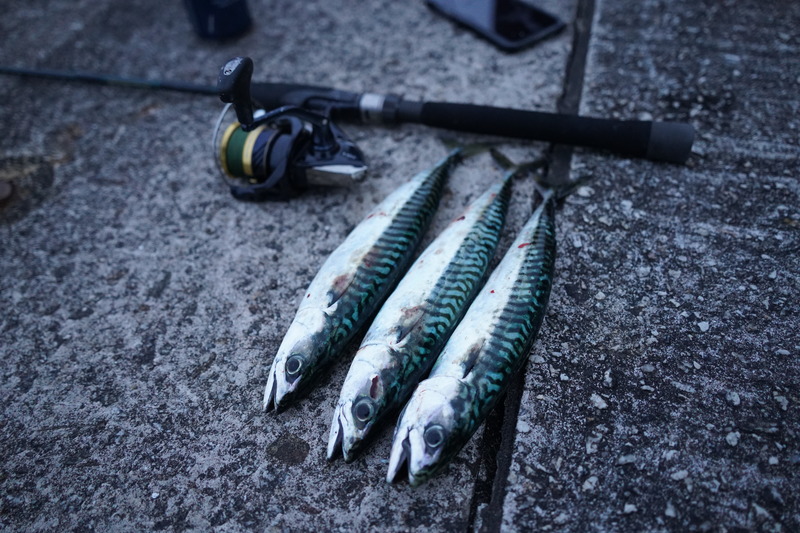
Mackerel Fishing
When the mackerel are in, there is often a party of fish activity. You’ve probably experienced having your hands covered in scales, pulling in strings of mackerel four at a time. A special hack for catching more of these fish is to use Japanese Sabiki feathers rather than the standard feathers you find in tackle shops. Sabiki feathers have smaller hooks which result in more hookups.
Bass Fishing
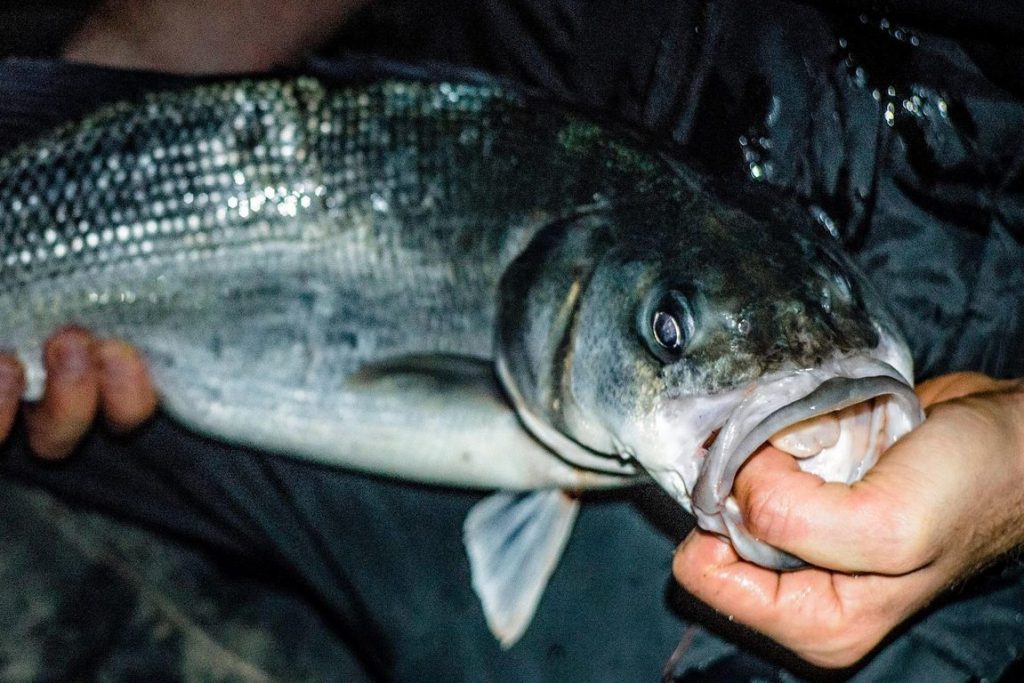
As for bass, you need to offer something more sophisticated to tempt them. Momolures sells cheaper versions of the highest-end bass lures available, so they are a good place to look if you’re getting started. The simplest option is to whack out a large dexter wedge. We have a guide on the best bass lures.
Read FishMag’s Bass guide here or complete lure set up guide.
Boat Fishing out of Portsmouth
The boat fishing around Portsmouth has changed a lot in recent years, so we interviewed Dave, the skipper at Dointhedo charters to find out more. He was knowledgeable and helpful sharing with us all about the species he targets and how he helps his clients catch more fish.
“Within an hour of leaving our berth, we’re on the mid channel wrecks. It’s 3 miles out. We can go and target absolutely anything. If they want to go out after Plaice we’re go after Plaice. If they wanna go after Porbeagles and thresher we’ll do that. If they wanna go wrecking for ling and conger we’ll do that as well. And then we get the species hunters. They might want to go after trigger fish we’ll equally do that. It’s all right on our doorstep.”
The only thing that isn’t on our doorstep anymore is cod. The past 5-6 years the cod have become conspicuous by their absence.
I mean we don’t even put any specific cod trips these days because they’re so few and far between. It’s just a waste of time.
However, there is still good sport fishing available in the area. Tope fishing has become particularly spectacular in recent years, with Dave noting that “you can go out with six people, if each of them don’t get at least 10 tope you’re doing something wrong.”
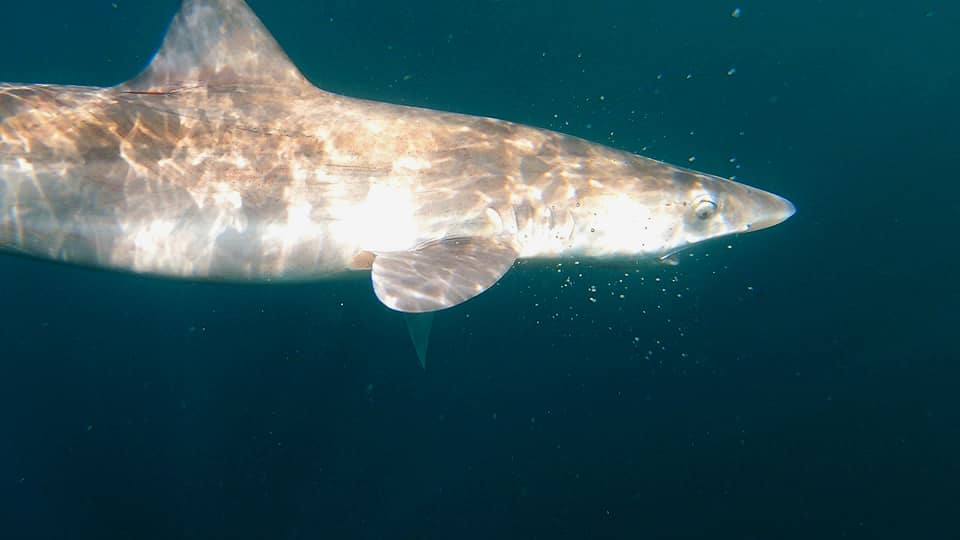
For those looking to target Plaice, Dave recommends drifting the banks with a 2-hook basic running ledger and a lead of no more than 2oz. However, when the boats anchored, he recommends using a paternoster rig with short snoods and a grip lead instead. This method, he explains, “proves to be very very successful. Certainly a lot more successful than a running ledger.”
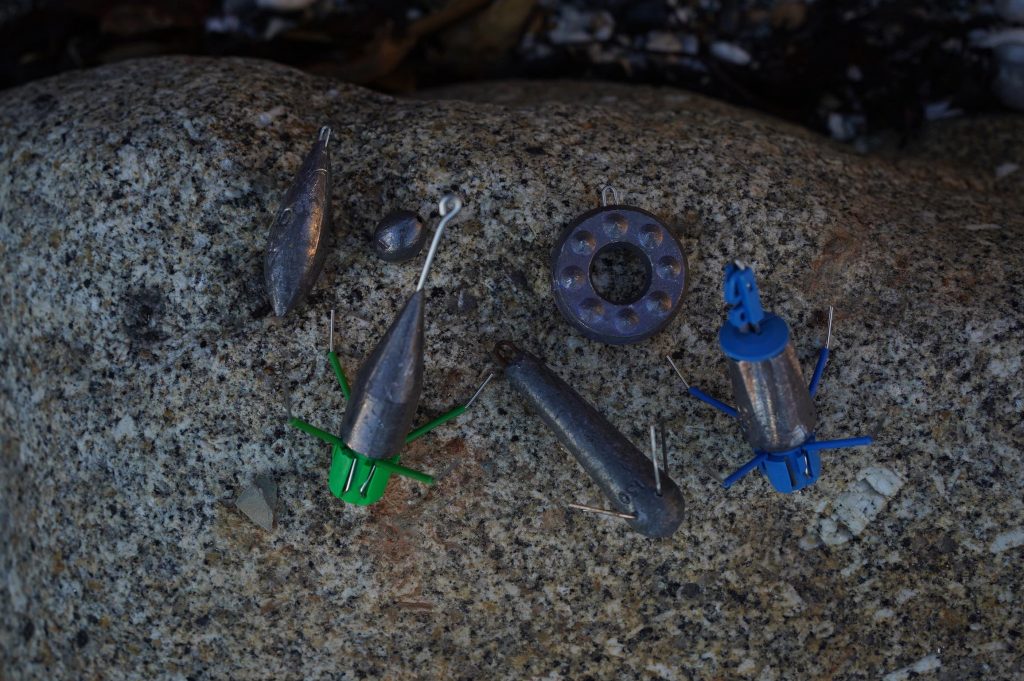
For those looking to target ling, Dave suggests waiting until the tide is very slack and drifting down the side of the wreck with big mackerel baits and large hooks.
“Now the ling, the ling that used to be quite prolific on a lot of the wrecks in the channel have really been hammered. Really been hammered. Now there’s no more than just a couple of wrecks that hold good ling. We don’t go out and hammer them every week day or weekend. We just limit it to one or two trips a year.”
“We wait until the tide is very, very slack. Until there’s just a tiny little bit of tide. Then all we essentially do is just drift down the side of the wreck with dirty great huge baits. We’ll be running down the side of any wreckage, not at a fast rate, so you wait until the tide has almost died off.”
“Then you’ll be using big mackerel baits. Size 8 or 10/0 hooks with a whole mackerel on them. That’s what we’ll use for the ling.”
As for conger fishing, the local skipper notes that “the conger haven’t been hammered like the ling. In the winter, in the cod season, when we used to go out for cod with big squid baits, now when you drop a bait down you’re going to get a conger.”
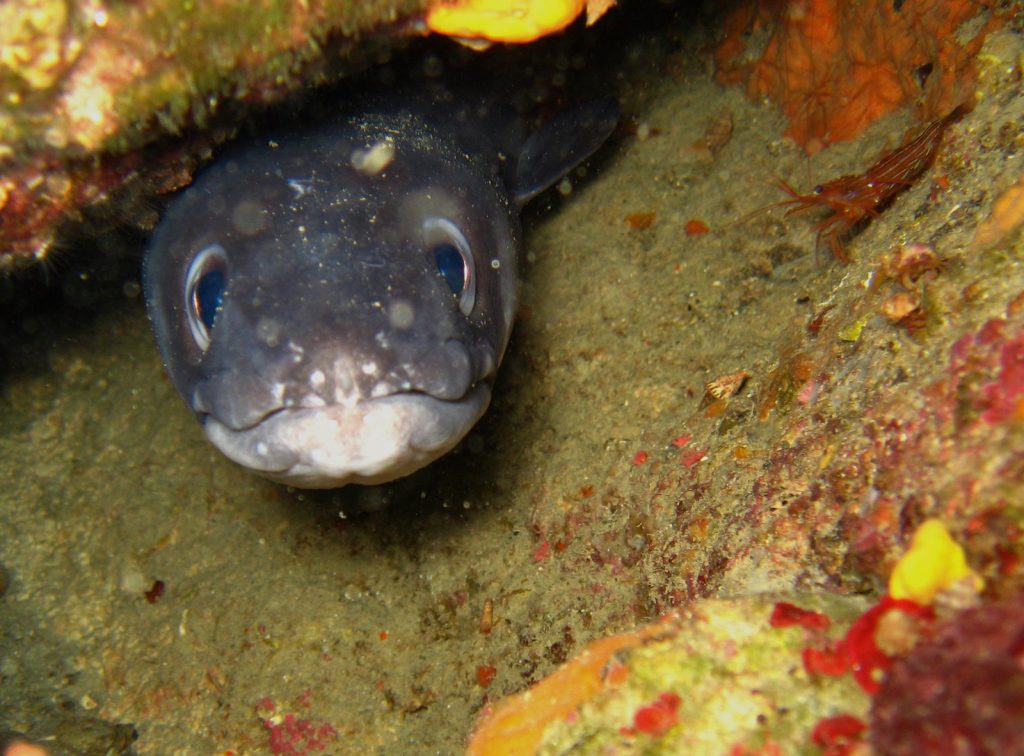
Sea fishing spots near Portsmouth
Fishing in Portsmouth can be excellent if you target the species that are most likely to be present at the time of year you’re fishing. As a sweeping generalisation, the marks in and around Portsmouth lend themselves well to targeting flat fish and other bottom dwelling species, as well as mullet and bass in summer. My advice to lure anglers would be to explore the area widely and cover a lot of ground to seek out fish, rather than remaining in one spot. To bait anglers I’d recommend Lee on Solent or Stokes Bay and a decent cast. To families, South Parade Pier is a well-established mark that charges for entry and has great views of the beach, but may not provide better fishing than Portsmouth harbour.
Fishing Southsea Beaches
Southsea Beaches are best fished at night and can produce sole and other flatfish species along with a chance at bass and whiting in winter. Fishing for flatfish in the area is an activity perfectly compatible with sunbathing while drinking a bottle of Corona or your chosen beverage – but if you want the bass you might need to put some more thought into your approach. However, if you’re the type to research a place before you go, you’ve already got luck on your side.
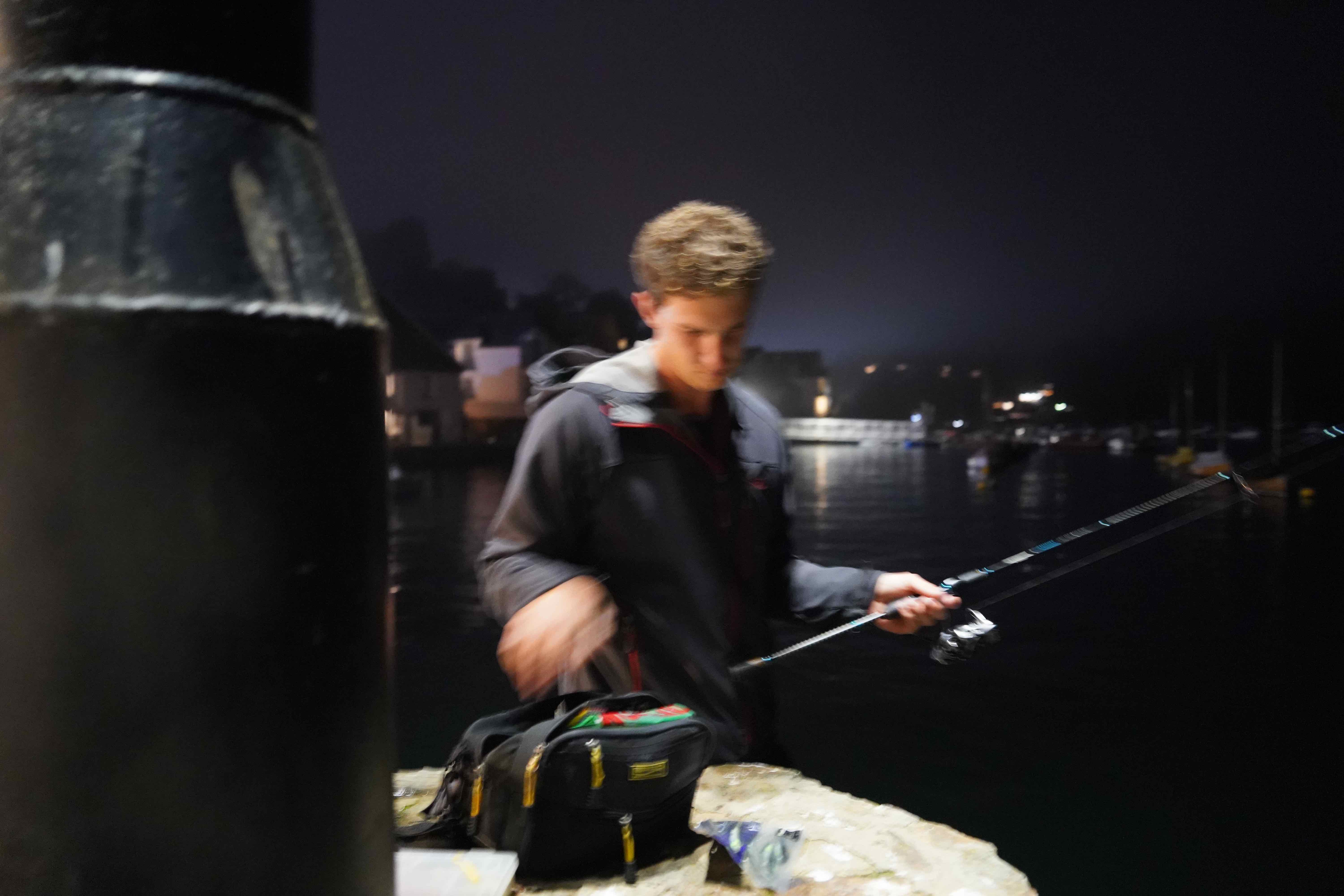
Fishing South Parade Pier
South Parade pier is the most ‘official’ place to fish in Portsmouth in that you have to pay to fish there. It isn’t necessarily a more productive fishing spot than anywhere else, but for those seeking good access and ease it may be a good bet. You can target flat fish and other bottom-dwelling species with ragworm on a size 8 hook on the bottom, or else go after mackerel with feathers in summer. You needn’t fish far out. Find out about booking fishing in Portsmouth here.
Fishing Portsmouth Harbour
Portsmouth harbour has multiple fishing spots that are worth exploring. It’s rewarding to fish with a float in this area for the bass, mullet and flatties. You can fish just off the bottom, keeping you in range of a number of species, while relaxing and not having to work too hard to avoid any boats etc. It’s a highly visual way to fish, and is more exciting for kids than bottom fishing. I would advise keeping mobile. You have room to move about, so try different areas rather than sticking to one spot.
Fishing Central Portsmouth
If you’re in the centre of Portsmouth, you can walk down towards Eastern road and fish along the coast there for bass and mullet with lures or flies. If you’re a bass-head this may be spot worth checking out. Another option close to Portsmouth centre is the mark at Old Portsmouth, which is good for night fishing and light lure tactics in day time. It’s primarily a summertime fishing spot, with shallow water. This is urban fishing and would suit the tactics deployed by the French lure anglers that fish around Paris.
Fishing Portchester Castle
Portchester Castle has good parking and waters with decent eel populations, as well as mullet, flatties and sometimes bass. You could try fishing in the moat around the castle itself, but don’t blame me if the castle ghosts cause you trouble… Fishing against the backdrop of such a magnificent old structure will mean even if you don’t catch fish you won’t regret the trip.
Fishing Fort Cumberland
Fort Cumberland has a powerful tidal movement which churns up the seabed just the way the Plaice like it. In Spring, you won’t be alone in trying your luck with a rag worm on a small hook, or perhaps a spinner tipped with ragworm if you’re taking a lure-based approach. Decent flounder can be caught over winter, too. The spot can be exposed to wind compared to many other marks around Portsmouth.
Fishing Eastney Blocks
Eastney Blocks provides a shingle sea bed ideal for beach fishing. Many species are keen on shingle ground over a sandy bottom, such as the codling that frequent the area in winter and Plaice and Sole in summer. A super long cast is not required, meaning you won’t be needing a continental style surf casting rod to be on for a chance of fish.
Fishing Cams Bay
Cams bay in Portsmouth harbour is excellent for the fair weather angler or family that want to avoid the wind on a breezy day. Try fishing on the bottom with a ragworm as far out as you can, or else go for bass at night as they move into the shallower water.
Fishing Lee on Solent
Lee on Solent is a spot frequented by serious beach anglers keen on catching larger species from the catshark family as well as rays. Smoothhound cruise into the waters here as the water warms up and leave again as it cools. Worm baits as well as sandeel are popular.
Fishing Stokes Bay
Stokes Bay is known for its soul – I mean sole. The bass fishing is also decent. Species caught include bass, ray, bream, cat sharks like Smoothhound as well as pelagic species like mackerel. This spot is hugely popular for good reason.
Fishing Millennium Pier, Gosport
The Millennium Pier at Gosport is ideal for light game tactics and targeting a wide range of species on LRF gear. It’s also family-friendly with easy access.
Fishing Langstone Passage
Langstone passage, the beach by the entrance to Langston harbour has a mud and shingle seabed that makes it unappealing to bathers but very appealing to species like black bream, flatfish, and – at night – conger eels. Simple bottom fishing rigs are a good bet, although bouncing a soft plastic lure across the sea bed could also be productive for bass, though I can’t claim to have tried this method here myself.
Southampton has hundreds of places you can dangle a line and expect a good chance of fish. Bass come into the estuary to feed on smaller species sheltering from the open seas. Ragworm thrive in the mudflats and are gobbled down by the flounder that dot the seabed. Smooth hounds and rays loiter in the deeper water, and shoals of codling cruise through the estuary in the winter months.
An estuary like this provides a lot of food for bottom-feeding species, which is why most anglers will be using bottom fishing rigs. Apart from the rich life in the mudflats, there’s the constant stream of food that floats down the river – insects, worms, bits of dead badger – who knows what! Fish in their thousands are lying in grooves and channels around Southampton, waiting for these morsels (or your bait or lure) to float past them.
Sea fishing Southampton
To learn more about the sea fishing around Southampton, we contacted Jeff, the skipper of the Lazy Daze Charter & Wildlife Boat. He’s been fishing the Solent for decades…
“Bream are probably the bread and butter fish of a lot of charter boats now. In July, August and September, the bream in the solent are pretty much spread out. They are all over the place.”.
When fishing for bream, Jeff and a sea fishing club he takes out from Hamble tend to use a three-hook paternoster rig with beads glued onto the line, with minimal color. These guys have got catching bream down to a science. For rods, they use telescopic, whippy rods with big fixed spool reels for a quick retrieval speed up off the bottom. Jeff mentions that competition fishing is different from average angling and involves baiting up several traces in advance to save time. Sounds like formula one racing!
Aside from bream, another key species for anglers in the Solent is the smooth hound and the channel whiting. Smooth hound are catsharks and are taken with bottom fished baits. Jeff says that the best bait for smooth hound is crab, either peeler, soft-backed, or ordinary hard shore crabs, and they will also take squid and rag worm. “They tend to take the squid early in the year and then as the year progresses the crab becomes the best bait”, he told us.
According to Jeff, 56 different bird species have been seen in one trip on his boat, including gosh hawks, peregrine falcons, and white-tailed eagles. But one species he hasn’t seen much of in the years leading up to 2023 is the cod. Cod fishing was also popular near Southampton up until 5-6 years ago, with Jeff having caught cod weighing over 30lb and regularly catching cod weighing 12-15lb. It’s not just Jeff that’s saying cod numbers are looking rough, other anglers are wondering where they’ve gone too.
Sea fishing spots near Southampton
Fishing Southampton Town Quay
This is easy parking and easy fishing. Park up and cast out. The area often produces dogfish, cod, sole, eels, flatties, gurnard and other bottom-dwelling species. You can fish down the side of the wall itself as well as further out, which is often the case at marks such as this, despite most anglers focusing on casting as far away from the wall structure as they can… It’s not all bottom-fishing action, there are also bass and mullet about for those with the patience to catch them. For bass, stick to night fishing close in to the wall.
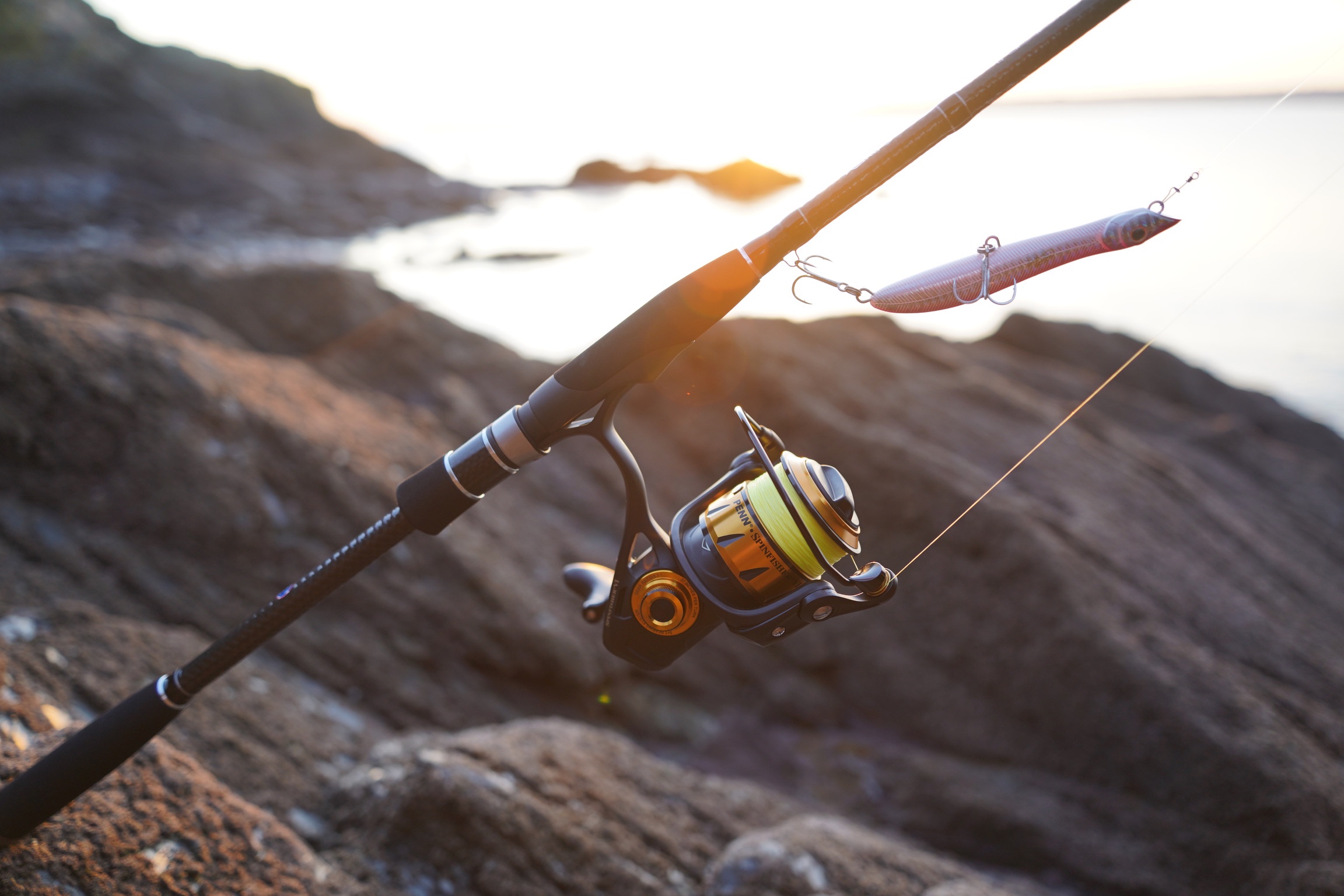
Fishing Weston Shore
Like most estuaries, Southampton’s most regular catches are flatties, bass, mullet, eels, gurnard and members of the cod family, like pollock and pouting. Explore any of the creeks around Southampton with rod and line and you can expect encounters with these fish. While the bass and mullet are of course mainly summertime catches, in Winter species like Flounder help the angler pull through! Fish on big spring tides at Weston Shore if possible, both around low and high tide. In winter, stick with flounder fishing. In summer, try a bigger hook and more generous lugworm bait for the bass. Bouncing a Fiiish Minnow along the bottom or letting it drift with the current makes for good sport with modern lure tackle.
Chilling Spit
It takes a walk to get to the mark, but with mostly snag-free ground and good flatty fishing it’s worth fishing. A ragworm or peeler crab on the bottom is your best bet. The mark produces beautiful Smooth Hound, bream and rays along with some other more reliable and familiar faces… You’re likely to have a lot of room to yourself at this spot to just enjoy the sea air, so it is a great place for ‘chilling’ indeed.
Magazine Lane
Magazine lane is a promising looking spot for light game tactics and LRF. The ground is very rough, meaning that weedless soft plastics would be the way to go. Many anglers using more traditional bait fishing gear find they lose a lot of tackle in snags, which obviously isn’t ideal. With a long enough cast you can get over the rough ground, but since fish like structure you’re better off getting amongst it and just having the right gear for the job. Use weedless soft plastics or perhaps a float fishing rig if you prefer using bait. This mark is quite sheltered from the wind.
Fishing in Hythe & Hythe Marina
Fishing in Hythe can be very good, with muddy ground that a lot of fish species love. Rays, smoothhound, eels and bass all lurk in these sail-boat filled waters. Rays prefer the deeper water which requires a long cast here. Other species will smash a ragworm with a small hook. It’s much safer to fish when the tide is going out here and caution is advised as it could become deadly if you get stuck in the mud, which can happen to anyone!
Hythe marina is a safer fishing option and a good shout in the summer months if you can tolerate the number of people.
Hythe reclaimed land
This post-industrial land is a brown-field angling mark different from most other marks you might encounter. Most of the UK is after all going from a natural to an unnatural state, but here the opposite has been happening. Cast out and fish on the bottom with rag and enjoy some excellent fishing, or else give it a go with lure gear and bounce a Fiiish Minnow along the bottom for the bass. This area turns up eels at night.
Fishing Hamble Common
Hamble Common is another pretty much snag-free location, although there can be weed to deal with in summer. Fish here at night if possible on the bottom, with peeler or a worm bait. With lure gear, getting enough distance in your cast may be challenging, except when fishing at night when any schooly bass might move closer in.
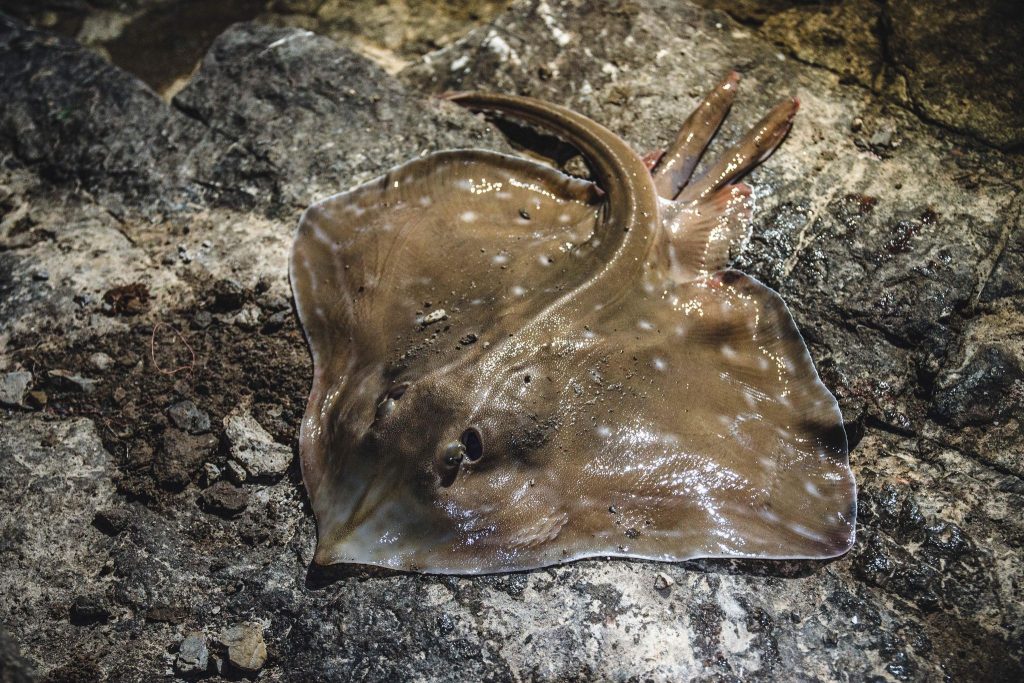
Fishing Warsash
Warsash offers good fishing around the Ferry pontoon, but exploring the area more widely is a good idea. Bass and flounder are the main target species, so ragworm or modern lures like the Fiiish Minnow are the way to go. The area is beautiful so you can’t complain too much if the fish don’t bite. If you fancy having a go for some mullet, the usual bread baits are the way to go – but expect a challenge! Just get out there with a rod and explore the area. Avoid using hooks that are too large for the flatties and you’re in for a good chance around Warsash.
SEA FISHING IN THE ISLE OF WIGHT
The Isle of Wight is a prime location for the angler because the sea will never be more than 10 miles from you. The island is only 22.5 miles across at the widest part. The sea is often rough on the west coast, which churns up the bottom for the bass. The more accessible marks for families are those that have piers, such as Ryde pier. This is because beach fishing is only really productive with high-end beach casting gear, which allows you to get the distance. Further beach fishing in the Isle of Wight is often best at night, which isn’t ideal for family fishing, so spinning from one of the piers or rivers in Wight is your best bet if you don’t have a surf rod with you.
Fishing Freshwater Bay
It’s a little bay that borders the cliffs at The Needles and is popular with swimmers. Like many beach marks, particularly in winter, the fishing is superior at night. Bass tend to move closer in at night, and bigger bass are more likely to be actively hunting. This means casting distances don’t need to be so long at night as they do in day time. You can also expect encounters with the staple species of Great Britain – the dogfish – and with various members of the extensive Cod family. You can also catch Conger from Freshwater Bay at night. For more family-friendly fishing, your best bet is fishing from the esplanade. Try fishing on the bottom as far out as you can, or down the wall itself at high tide with a ragworm and see what’s around…
Now, I’d love to fish from the rocks around the Needles itself but safety and access is, as far as I’m aware virtually impossible. Certainly, with the strength of the current in the area combined with often rough seas, even if you could get down the cliffs somehow you’d likely be in trouble. I’ve no doubt there is some prized fishing to be had there, if only it was accessible to the angler.
Fishing Compton Bay
Compton bay is an area that has traditionally been fished from low tide onwards for bass and flatfish. As a general rule, high tide is better fishing in most locations, but Compton Bay breaks the trend somewhat. It’s a sandy beach and you’ll need a huge casting distance to be able to get the distance into the deeper water. In a surf you need to be able to cast beyond the waves. The beach is best fished after dark, particularly for conger with oily baits like mackerel or a section of garfish. The beach is large enough that it’s not too busy to fish even in peak summer months. Bass fishing in Compton bay is best when there’s a surf, as bass like feeding when the bottom has been churned up. Try fishing with ragworm or lugworm on the bottom just past the waves. You’ll need at least a 4oz weight, preferably a gripper lead, to hold the bottom considering the current and waves.
Fishing from Sudmore, Chilton and Brighstone is more of the same. Bottom rigs fished far out, preferably at night work best. Fishing around low water and high water is your best bet from these marks. Sometimes the lower water gives you access to different ground which may be where the fish are feeding. Heavier gear is recommended if you’re interested in catching the tope, conger, skate that are occasional catches in the area. Large baits and big hooks are of course the order of the day if those species are your interest. For the family that’s happy to catch a dogfish or a flatfish, just fish a ragworm on the bottom as far out as you can and try to fish late in the evening if you can.
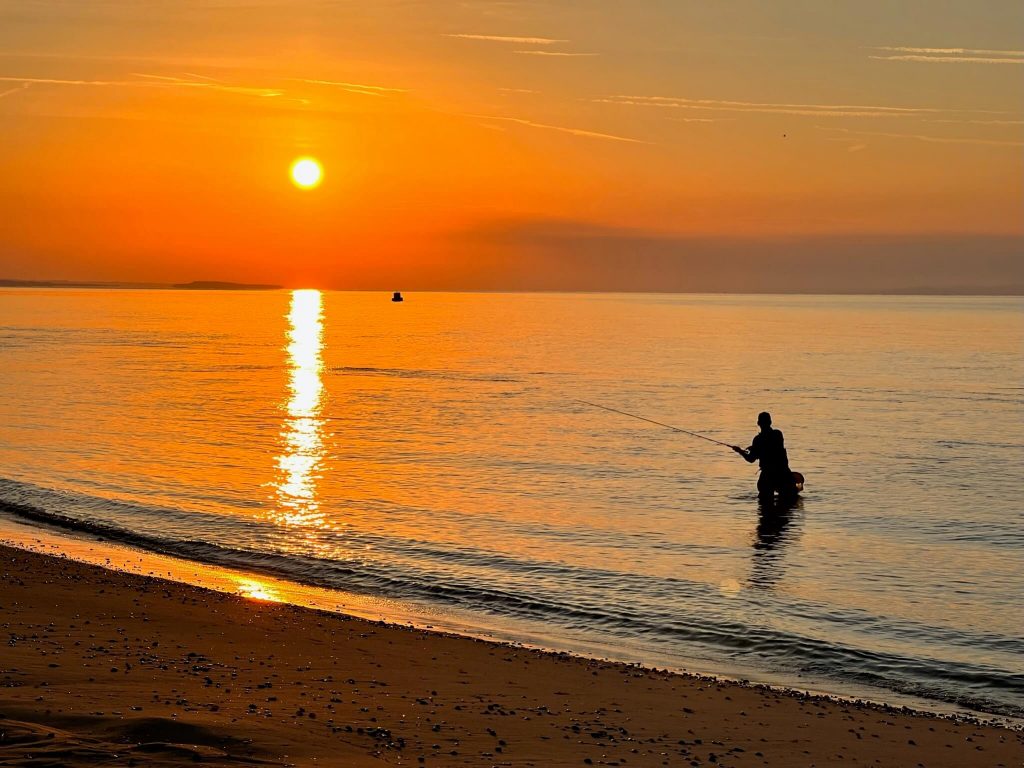
Fishing Atherfield Beach
Atherfield Beach provides a slightly different kind of fishing from the aforementioned marks. It’s a shingle beach with submerged rocks that run for a great distance out to sea – much further than you could cast. This can result in larger fish being tempted much closer into shore, including huge skate, monkfish, turbot and cat shark species. This is where I would recommend fishing if you can, and it’s better when fishing with lighter gear as you don’t need to cast so far as you might on other South West Wight fishing marks. Bass will come in close at night. There is a cliff path you can follow to reach the Atherfield fishing marks.
Fishing Chale Bay, Blackgang Beach & Rocken End (if you dare)
Chale Bay and Blackgang Beach are also tempting marks. The first of these produces pelagic species like mackerel which will get pushed in on a big tide from their roaming. Strange fish have been caught here in the past…
Rocken End is a challenging mark to reach but can pay dividends for experienced anglers that take precautions.
Fishing in Reeth Bay is where I would recommend if you’re fishing with modern lure gear, for instance, spinning for bass or wrasse. Although only accessible via a tiny little road with a holiday retreat at the end of it, this area offers the rock fishing that the rest of the South West coastline lacks in the Isle of Wight.
Fishing the west coast of Isle of Wight you should consider exploring the coast around Ventnor, Shanklin, Sandown & Bembridge. All these places have potential for the angler. As a general recommendation, bottom fishing with ragworm and a weight that can hold the current is a good start.
Fishing in Ryde
Fishing in the Ryde area you have access to huge sandy beaches with shallow water that gently shelves. Towards Seaview, the water gets deeper much faster. This part of Wight is more likely to produce mackerel than the West coast. Ryde pier is your best bet for families or harbour wall fishing with regular fishing kit. Most of the fishing marks in the Isles of Wight require heavy beach casters, so this mark gives those without that gear a chance to get stuck into some fish too. The pier produces mackerel, flatfish of various species, pollack, scad, whiting, bream and numerous other species. There are often mullet cruising just beneath the surface, but tempting them will be challenging without specialist gear and bucket loads of bread and patience. Historically locals would use anchovy paste for the mullet, combined with the usual bread. Fish a few feet off the bottom – you may see mullet on the surface but they typically go down to the bottom to feed. That’s why it’s oft said that if you can see them you won’t catch them! Ryde fishing shop is a good place to pick up any gear you need, or else you can order online.
Make sure you keep out of the way of boats when fishing from Ryde pier.
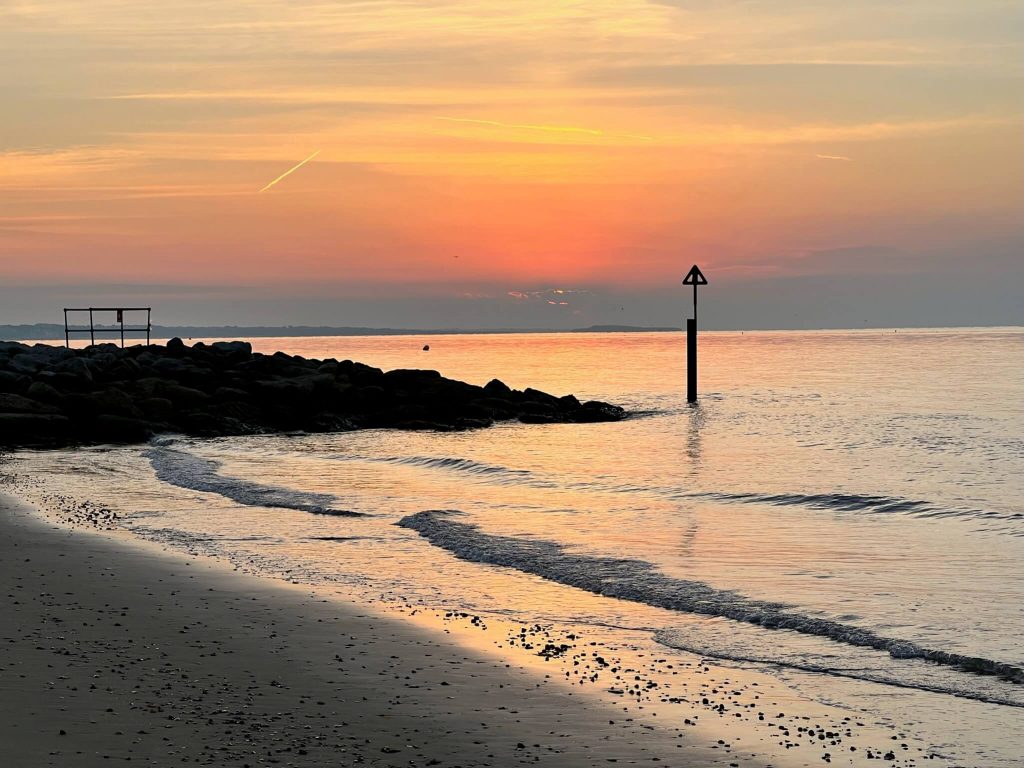
Fishing in Cowes, Newton, Yarmouth
From the East Cowes esplanade, you can catch flatties, bass and mullet. The river mouth is also worth a try.
Newton is one of the best places for lure fishing on the Isle of Wight. Try lure fishing from the river mouth for bass.
Yarmouth pier is another place you can expect to have a chance at mackerel in summer, as well as the usual pollack and bass you might snag at night. You can also fish from Totland pier, or at least could in the past. Bass and plaice were caught in decent numbers with some larger species like conger occasionally making an appearance at night.
